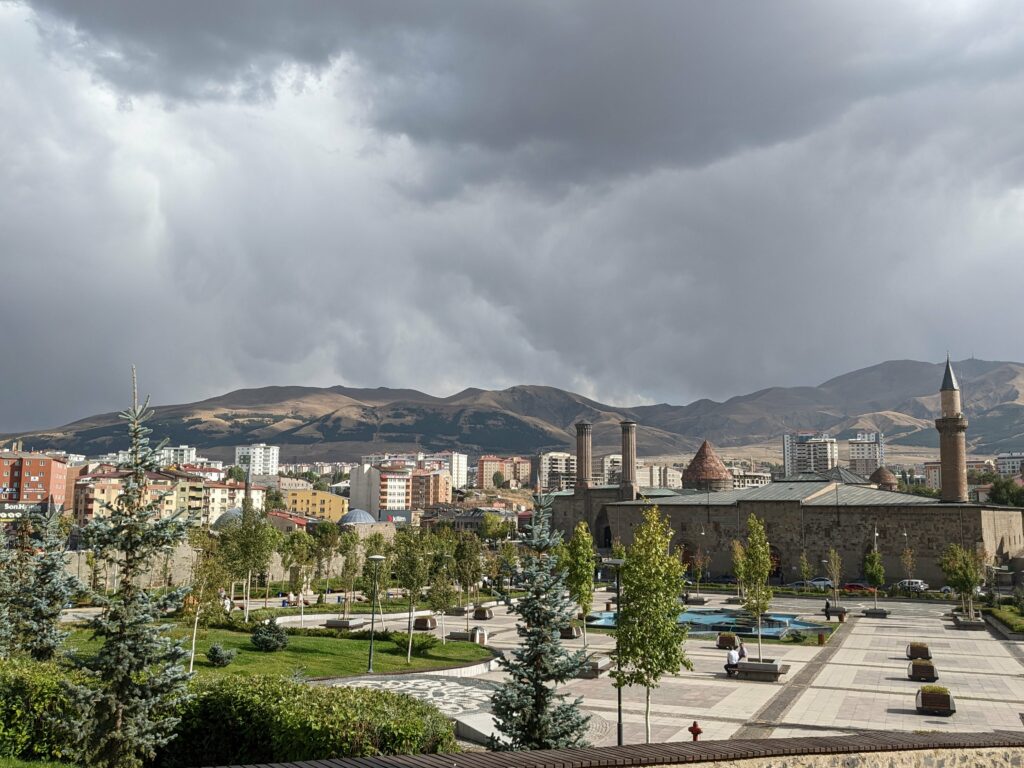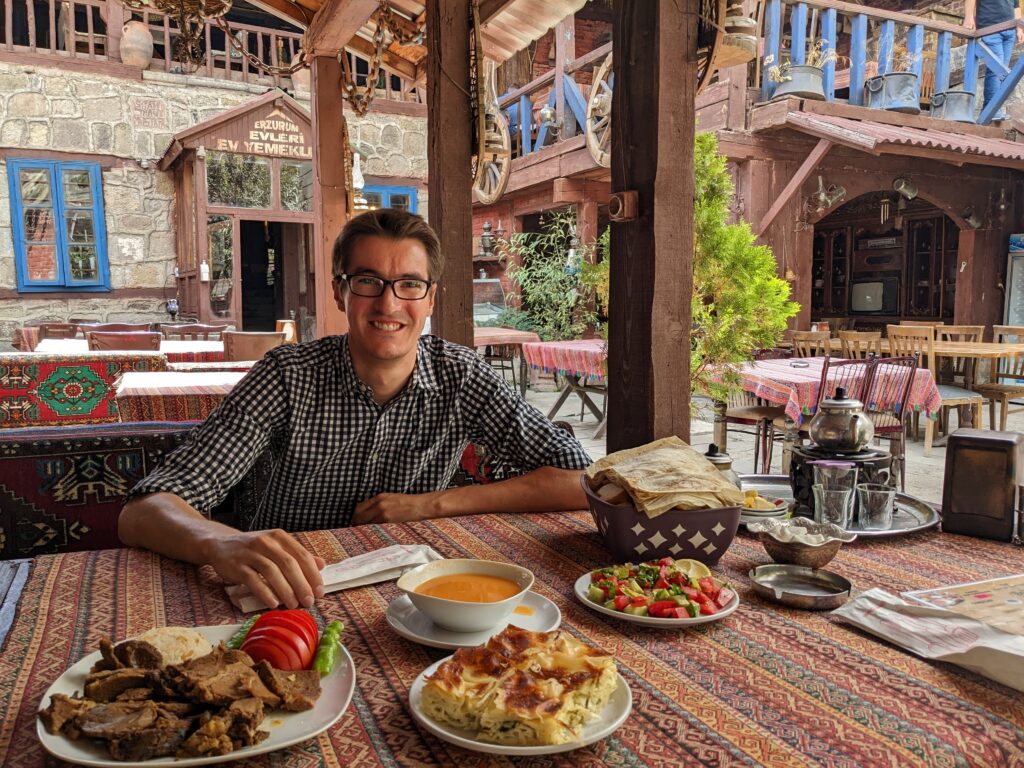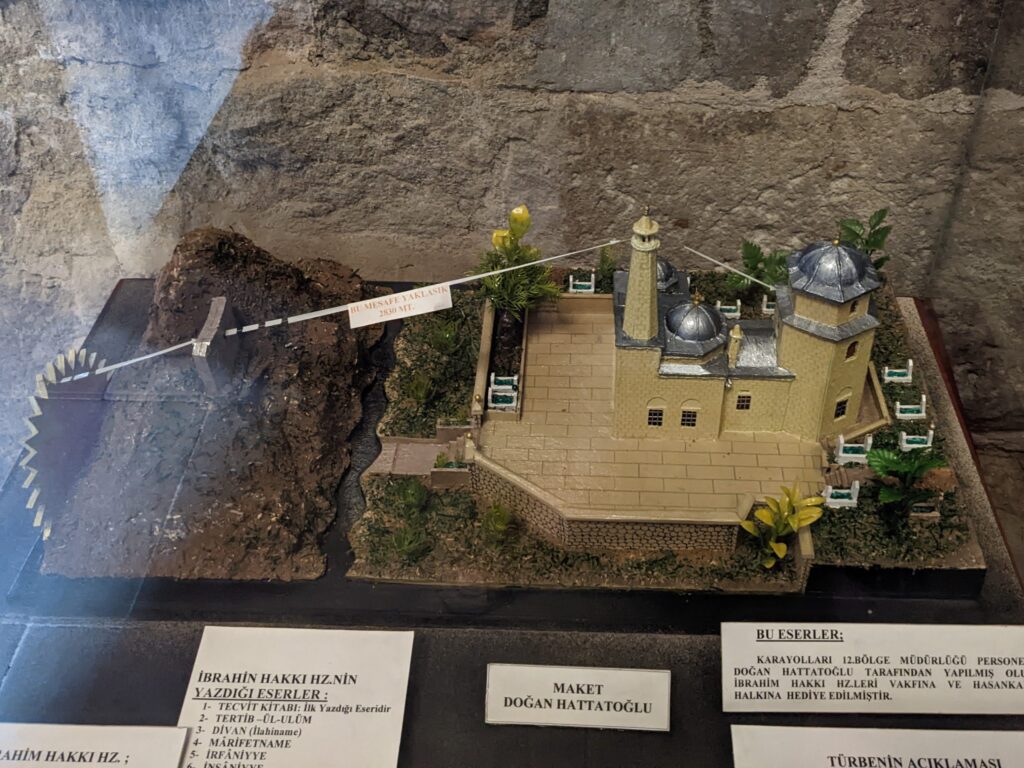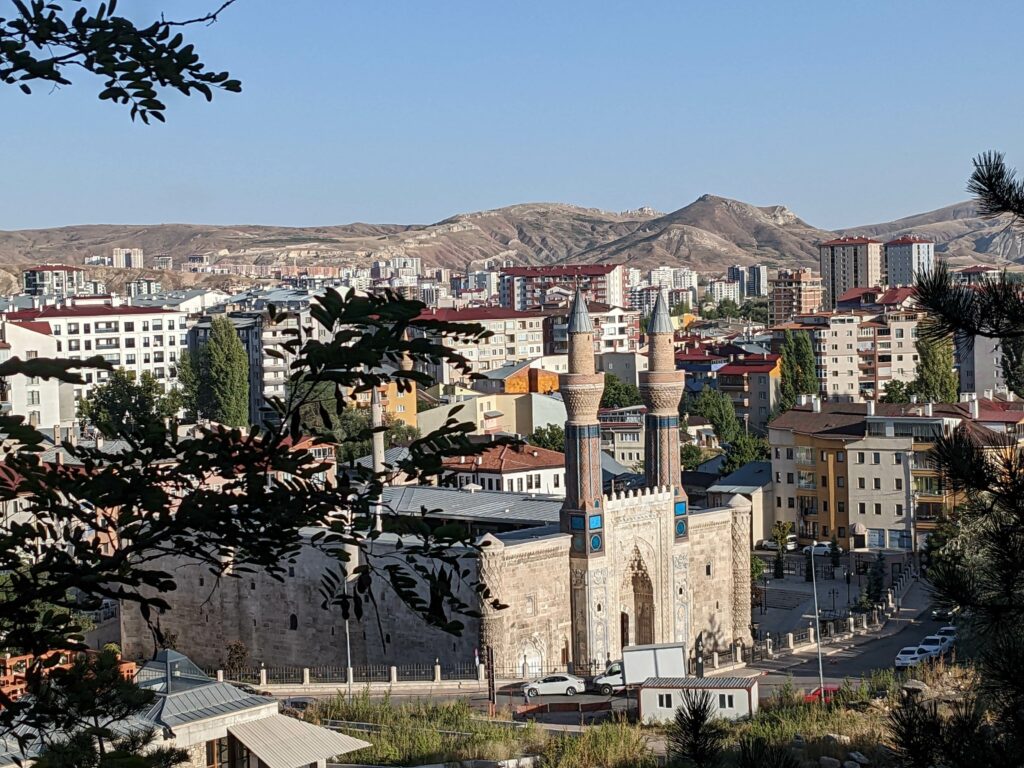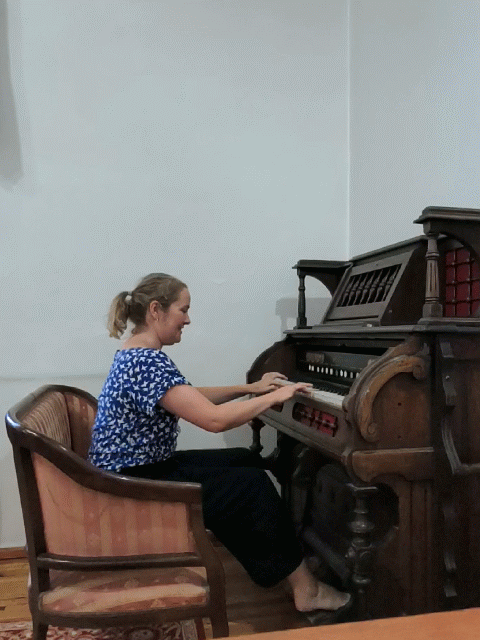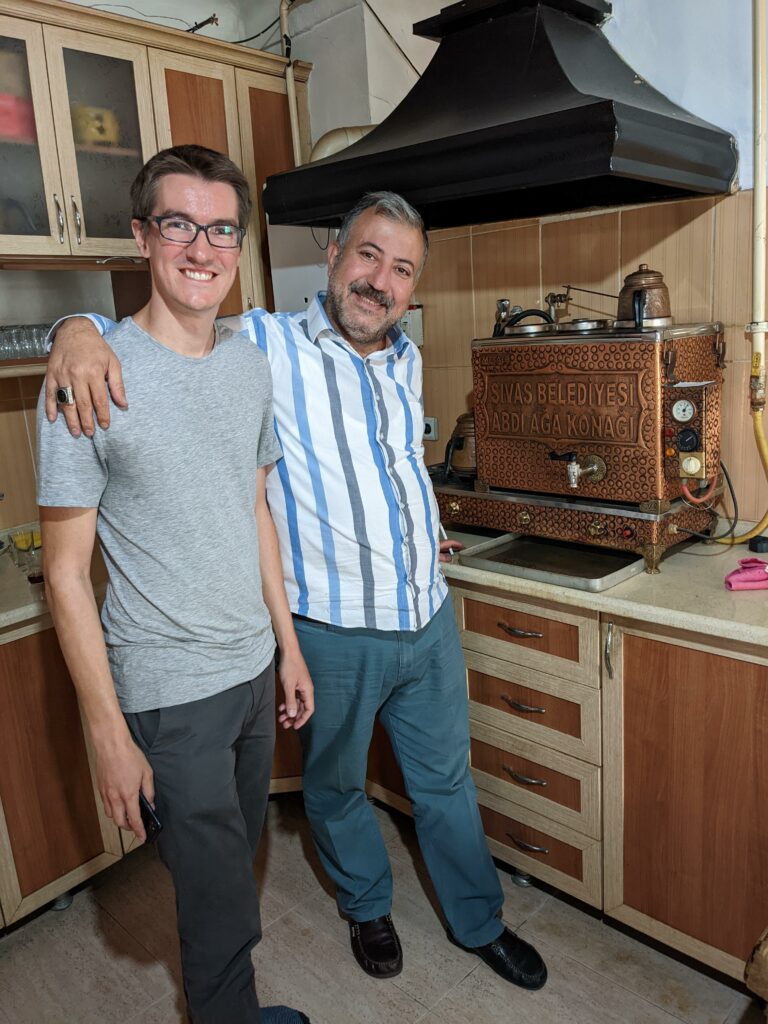After the excitement of travelling the width of Turkey, a new country for both of us, we were back in familiar territory in Georgia as we’d travelled here together in 2019. On that trip, I’d been really keen to visit Batumi but we simply couldn’t fit it in, so this time, we made a beeline for the city as soon as we’d crossed the border. I knew that Batumi had been a popular Soviet holiday resort, and I had visions of rusting fairground rides, austere architecture and brash seaside fun. It had all this, but a lot more besides. We extended our stay to five nights in the end (which is not long, but still the longest we’ve stayed in any one place), but you’d need a lot longer than this to really get under Batumi’s skin. It’s a funny place, but we liked it – we think.
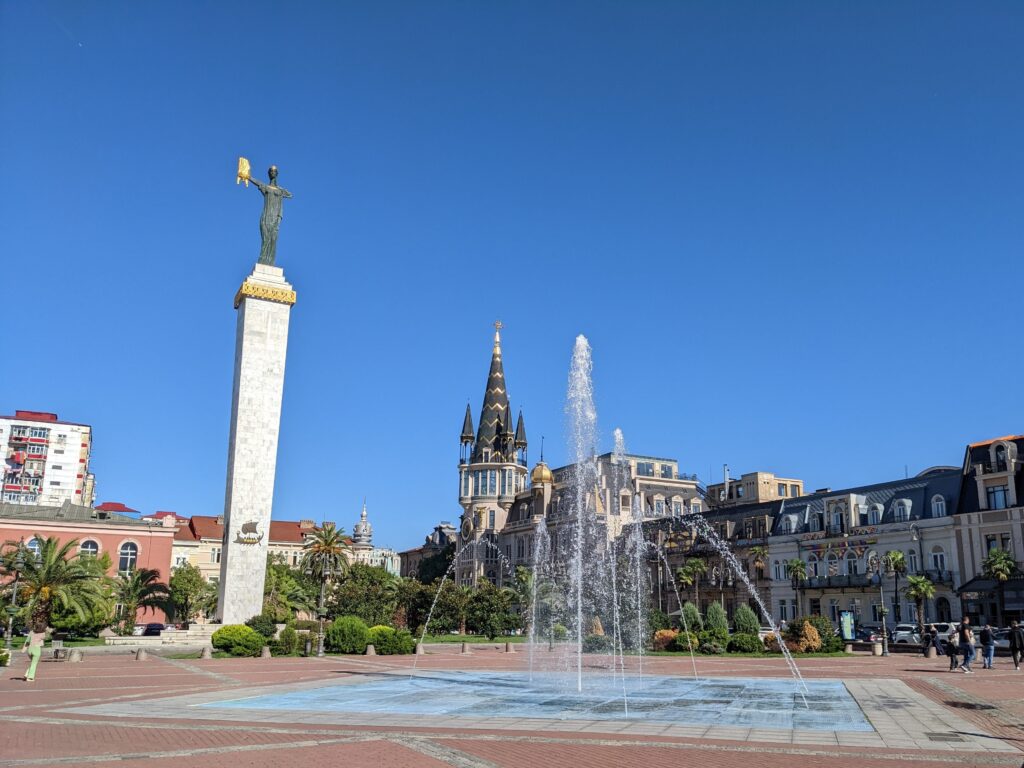
Part 1: Staying in the old town
After an action-packed couple of weeks, we’d planned to hibernate for a day or two on our arrival in Batumi. This turned out to be excellent timing, as it rained extremely heavily for two full days. We thoroughly enjoyed our guilt-free retreat, and spent the time cooking, washing, writing and planning.
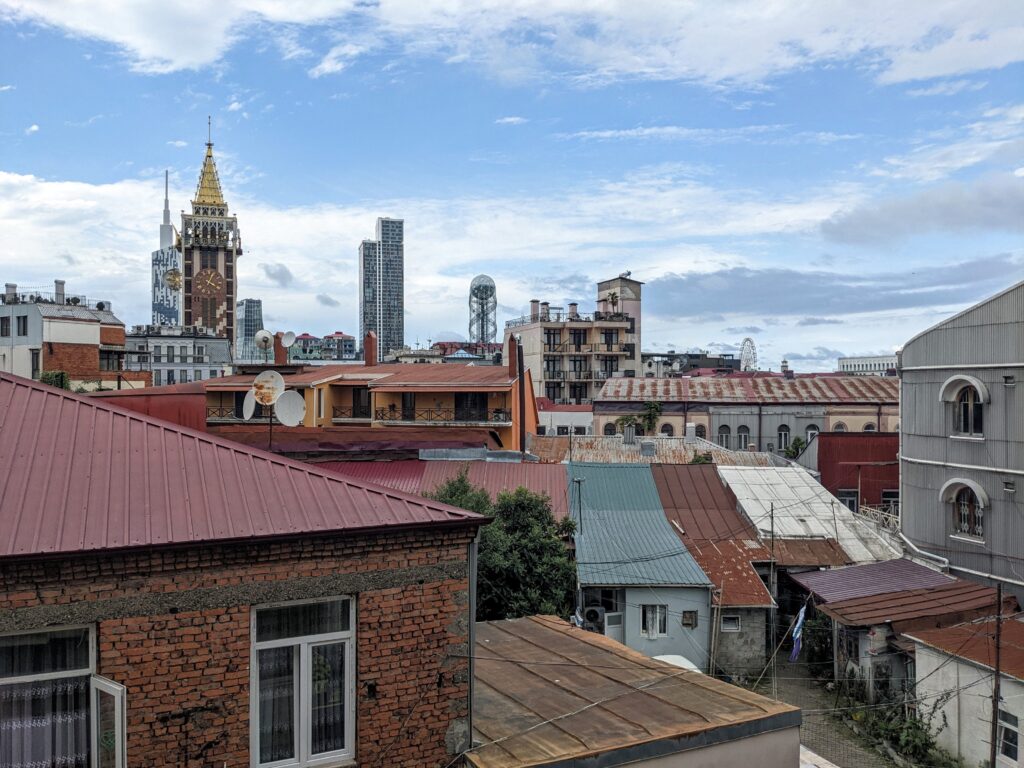
On rare breaks in the rain (or, more accurately, when we ran out of food and had to brave the downpours), we walked the streets of the old town. This wasn’t the Batumi I’d expected. It felt relaxed and low-key, and not a million miles from the atmosphere in Tbilisi. Like elsewhere in Georgia, many buildings were draped in grapevines and painted soft pastel colours (for obvious reasons, the below photos were taken once the torrential rain had stopped!)



However, there were also glimpses of some of Batumi’s newer and more ostentatious buildings, as well as the requisite Soviet apartment blocks dotted around the city.


On our second full day, we decided we’d waited quite long enough to eat our favourite Georgian food. So, we headed to Khinkali Ludi, an unassuming local joint with just one thing on the menu: khinkali (well, more accurately, there wasn’t a menu at all – you just let the ladies know how many you wanted). Khinkali are best described as somewhere between ravioli and a dumpling, most commonly filled with meat, cheese, mushroom or potato. Our favourites (and the ones served here) are kalakuri, which translates as ‘city style’. These contain a mixture of pork and beef, with plenty of chilli and coriander and a steaming, salty meat broth. They’re a bit of a challenge to eat as you have to nibble a hole in the dough and slurp the broth out before the whole thing disintegrates, but that’s all part of the fun. The alarmingly green drink in front of me is Tarkhuna, made from tarragon. I don’t much like tarragon, but I am shallow and was seduced by the colour! It tasted like herby lemonade and was a great accompaniment to the khinkali.
Each khinkali cost just 1 lari (approximately 30 pence) and I know they don’t look like much, but this was the most delicious meal we’ve eaten in weeks and I’m already regretting we didn’t go back for more.



It was raining so heavily that this expedition was a bit of an adventure because the streets were flooding and there were torrents of water flowing off buildings and into buckets placed on the (very uneven) pavements. Our raincoats + umbrella + flip flops/sandals combination was definitely a good one and we seemed much happier than the few other people who were out and about! It reminded us of the time in Hanoi where we tried to wait out a typhoon in a beer hall, but it turned out that the typhoon had more stamina than us so we waded home and Oli’s flip flop floated down the street. Thankfully, that didn’t happen this time but it wasn’t far off!

Part 2: Staying on the 43rd floor
We decided to extend our stay in Batumi because we’d barely left the apartment during the rain and the forecast was looking much better. Our new base was right on the seafront, in a brand new building. When we booked it, I thought that staying on the 43rd floor sounded really cool, but in practice I spent most of our time alternating between peering at the view from the balcony with wobbly knees and nervously studying the fire evacuation plans.
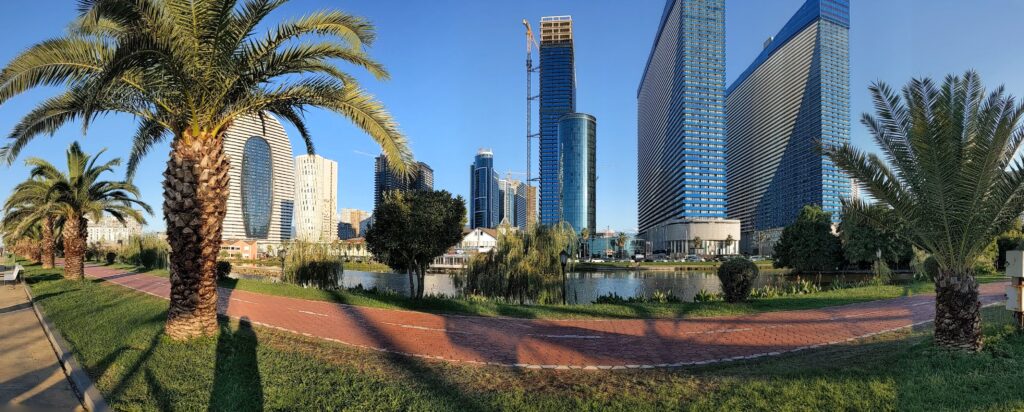
The views were pretty good, though.


We saw a totally different side of Batumi from here. A long seaside promenade ran for 7 km, passing sculptures, fountains, fairground rides and Batumi’s new breed of ultra-modern architecture. There was even a Japanese garden. It was definitely the place to see and be seen, and must have been SO busy in peak holiday season.
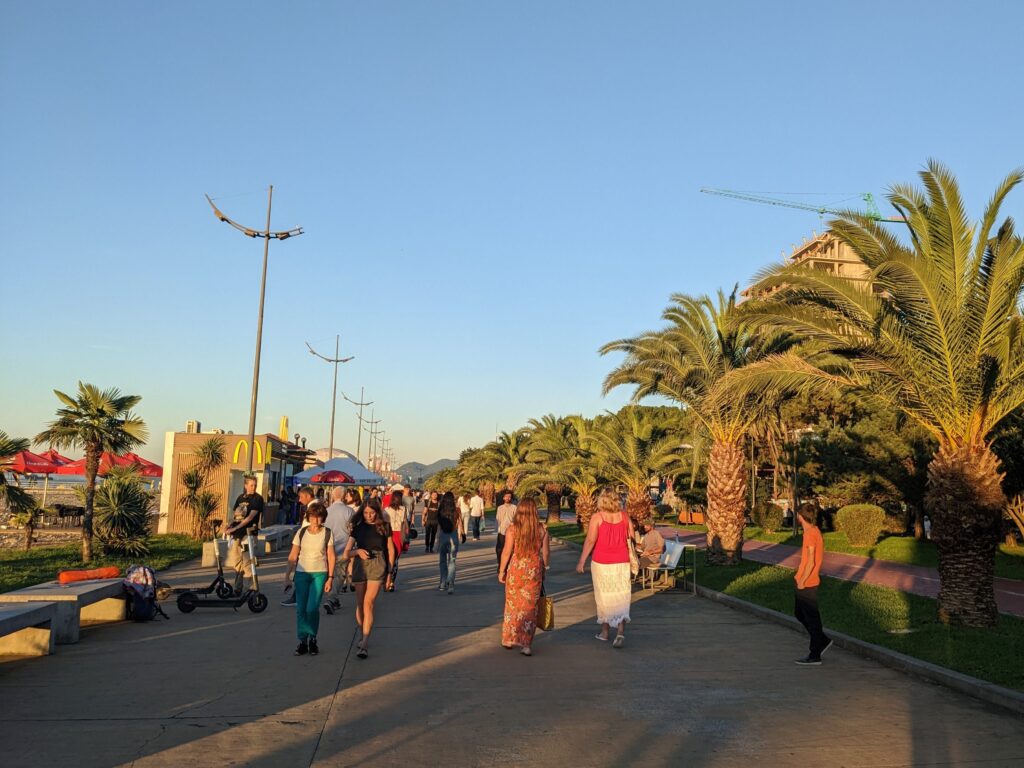
It turned out that our first base in the old town was much nearer many of the seafront attractions than our second base actually on the seafront, so we had the opportunity to walk this long promenade several times over. This was no hardship, as there was so much to see.



At the far end of Batumi Boulevard lies a lighthouse, a Ferris wheel and a mesmerising moving sculpture nicknamed Ali and Nino (after a famous Azeri novel). The below video is sped up – they actually take about ten minutes to do a full circuit before ‘kissing’ but ultimately failing to connect.
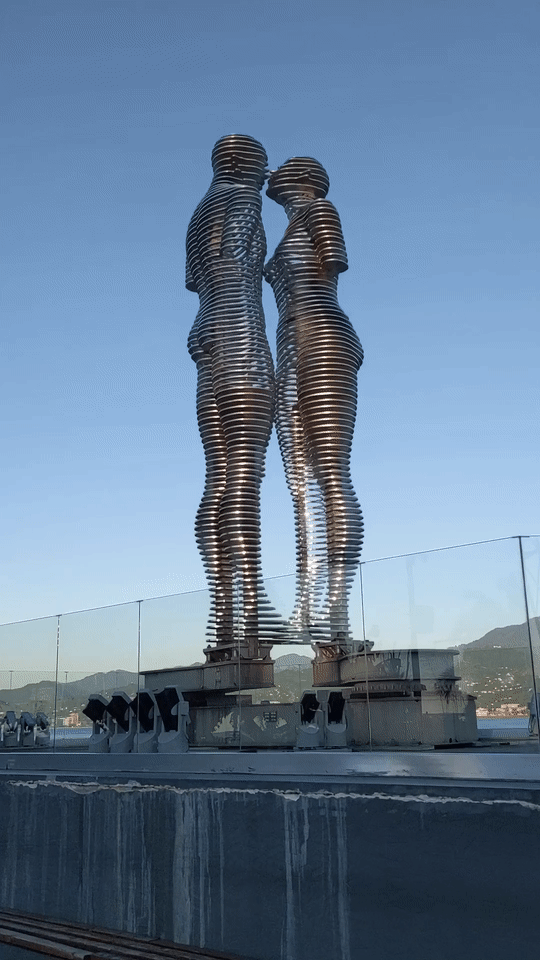
We took a ride on the Ferris wheel one evening at sunset. It turns out this isn’t the only Ferris wheel in town – the other is a slightly bizarre construction within a skyscraper that is sadly not operational (you can just spot it in one of the photos above – behind the Soviet apartment buildings).
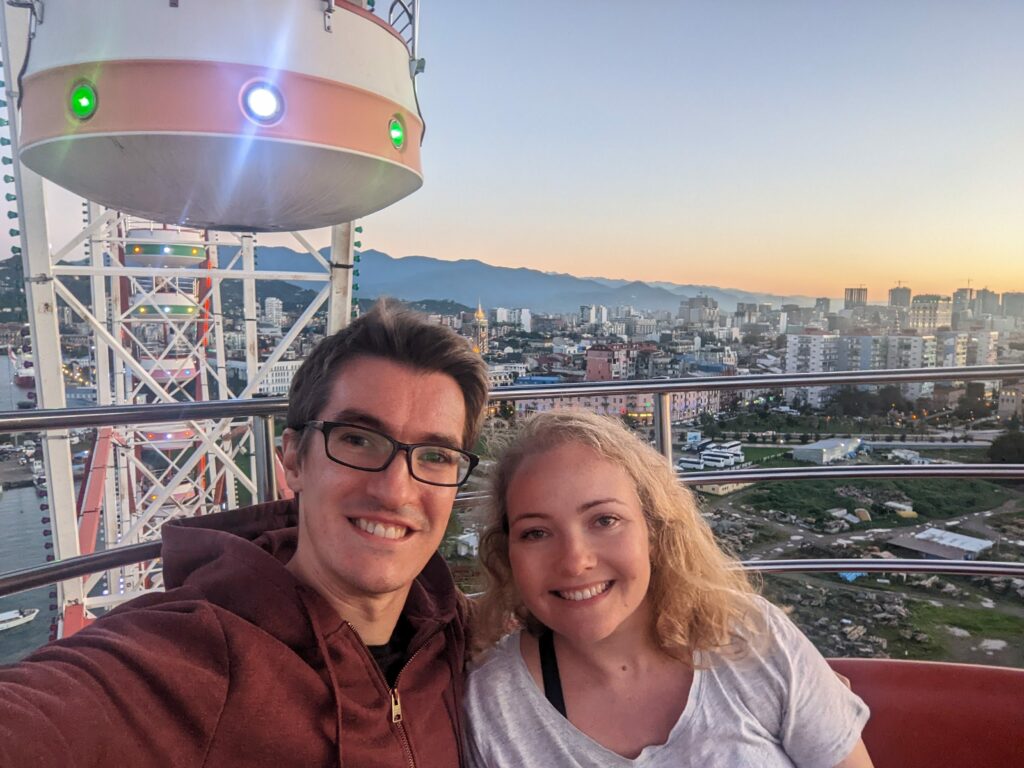
At night, there are dancing fountains to music in several locations around the city – we suspect these were modelled on those at the Bellagio in Las Vegas. They weren’t quite as impressive, but it certainly seemed that Batumi is keen to make the most of comparisons between the two cities.
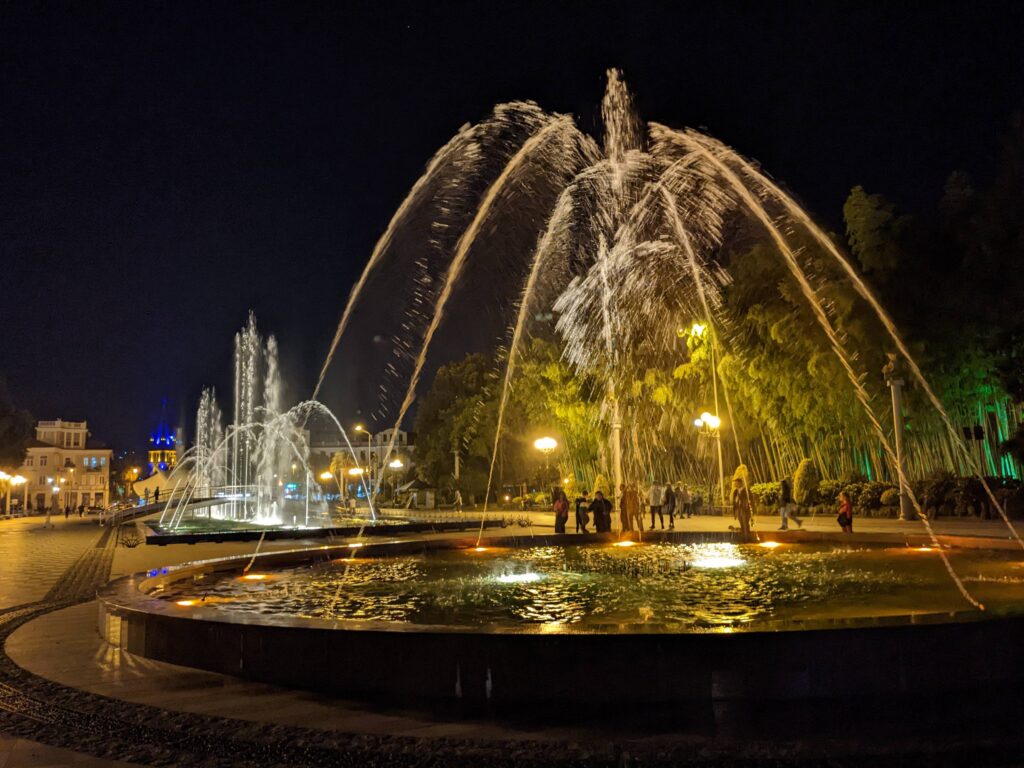
On our final afternoon, we thought we were being highly original when we bought Argo beers to take up the Argo cable car so that we could have a drink overlooking the city. It turns out we weren’t so original after all, as there was a cafe at the top with branded umbrellas and lots of people drinking the beer, but at least ours were bargain supermarket bottles!



We also visited a Soviet beer hall, a no-frills place on the site of the city’s brewery, where beer is made to a regulation standardised recipe that has never changed. Oli had read that there were some businesses nearby that pose as being part of the brewery but aren’t really, but from the limited information he’d read online, we couldn’t work out which was which (even after a lot of embarrassing back and forth). Since he was very keen to make sure we visited the original venue that has been serving since 1951, we just had to have a pint in each of them. I really enjoyed how much cheerier he looks drinking his second pint than his first!


Both venues were seriously lacking in atmosphere but the beer was half decent and we couldn’t really complain at 60 pence a pint. In the first, the main point of interest was that there was a tree growing through the building (and it didn’t look like they had tried very hard to make the roof fit around it so I imagine things get interesting when it rains). In the second, there was a whole group of ladies napping in the corner when they weren’t needing to serve beer! We enjoyed watching the steady stream of men buying huge quantities of beer to take away from a serving hatch directly on the street.
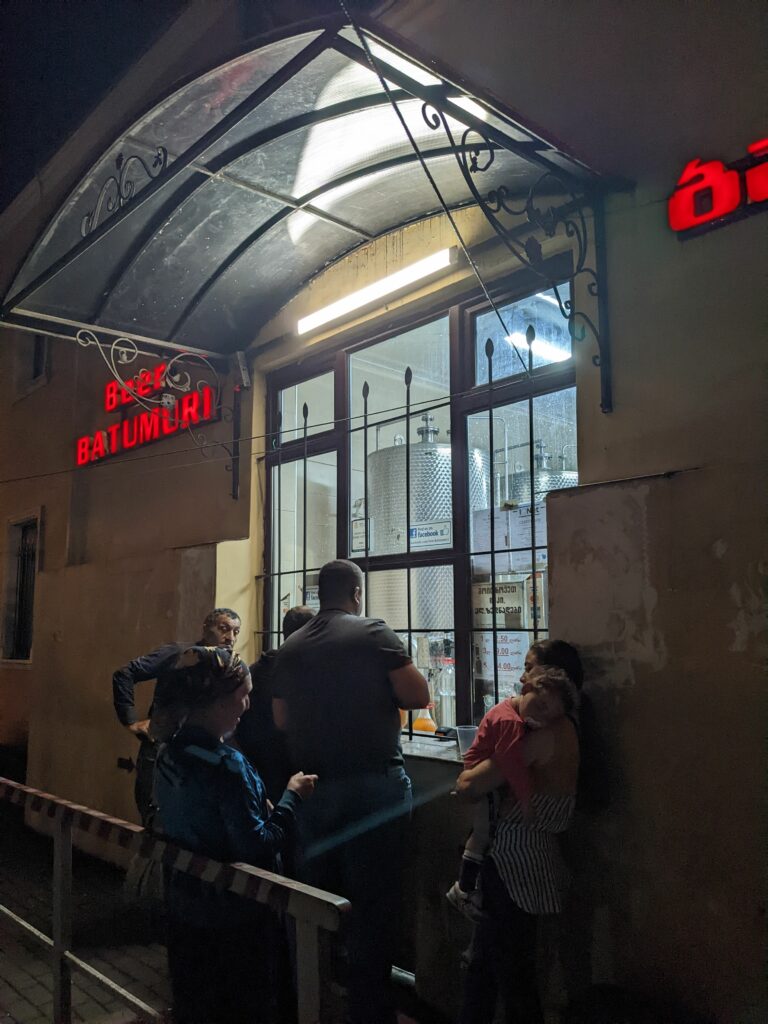
That concluded our time in Batumi, and our next stop was somewhere very different: the mountains of northern Georgia.
